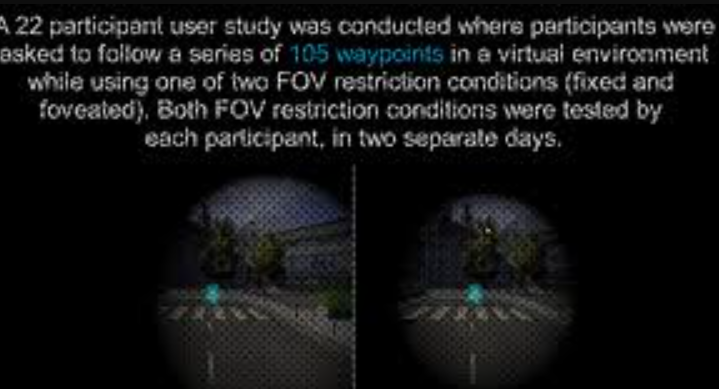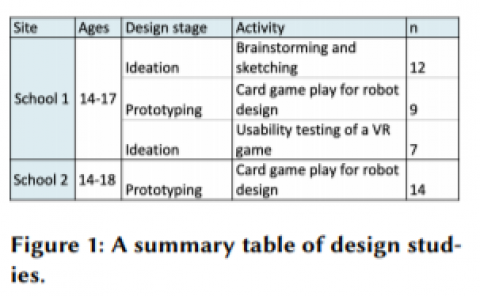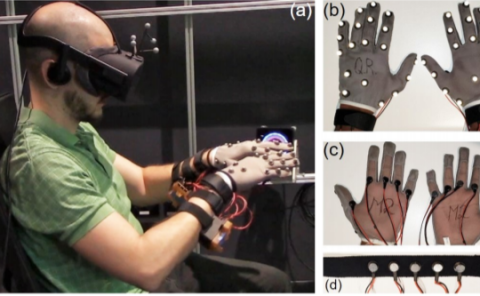The Effect of a Foveated Field-of-view Restrictor on VR Sickness
PubDate: May 2020
Teams: University of Nevada
Writers: Isayas Berhe Adhanom; Nathan Navarro Griffin; Paul MacNeilage; Eelke Folmer
PDF: The Effect of a Foveated Field-of-view Restrictor on VR Sickness

Abstract
Virtual reality sickness typically results from visual-vestibular conflict. Because self-motion from optical flow is driven most strongly by motion at the periphery of the retina, reducing the user’s field-of-view (FOV) during locomotion has proven to be an effective strategy to minimize visual vestibular conflict and VR sickness. Current FOV restrictor implementations reduce the user’s FOV by rendering a restrictor whose center is fixed at the center of the head mounted display (HMD), which is effective when the user’s eye gaze is aligned with head gaze. However, during eccentric eye gaze, users may look at the FOV restrictor itself, exposing them to peripheral optical flow which could lead to increased VR sickness. To address these limitations, we develop a foveated FOV restrictor and we explore the effect of dynamically moving the center of the FOV restrictor according to the user’s eye gaze position. We conducted a user study (n=22) where each participant uses a foveated FOV restrictor and a head-fixed FOV restrictor while navigating a virtual environment. We found no statistically significant difference in VR sickness measures or noticeability between both restrictors. However, there was a significant difference in eye gaze behavior, as measured by eye gaze dispersion, with the foveated FOV restrictor allowing participants to have a wider visual scan area compared to the head-fixed FOV restrictor, which confined their eye gaze to the center of the FOV.


